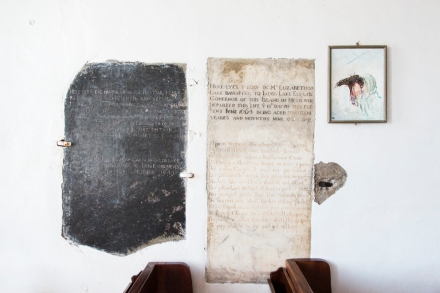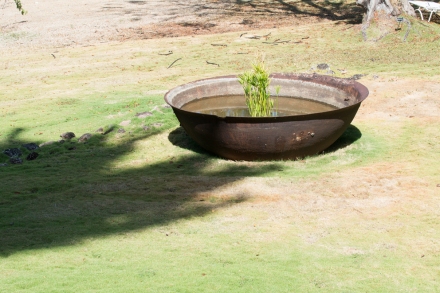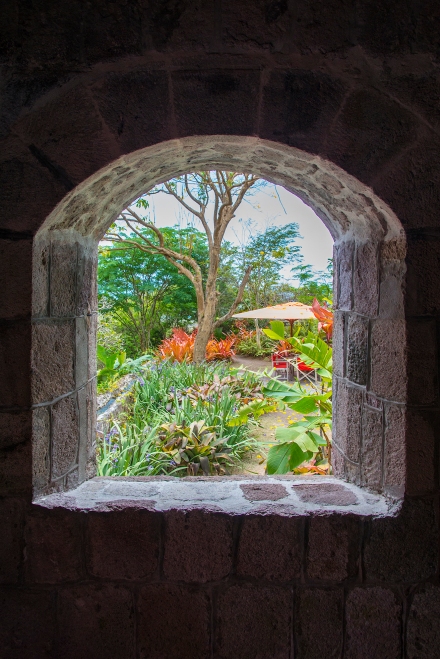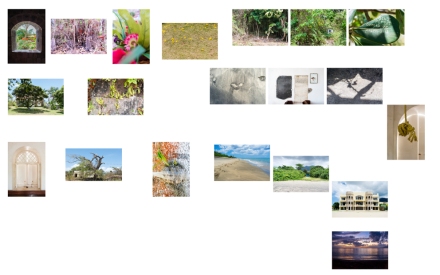
This moment of my studies has me in a lighter place with a camera, with the will to make work, even if the direction the work is unknown and un-bid. The occasion though of a holiday brings back to the fore for me the paradoxes of image making, it was (past-tense) a means to collect, it then became a means to avoid, I am now pleasantly relieved it is now an occasion to investigate. I want to make images again. I had thought recently about evacuating to the wilds somewhere and revisiting the aesthetics that had me making image after image – for the sake of the image only. I have resisted, but the impulse to craft imagery in the frame has returned.


I am testing this re-found delight in the shutter release on a holiday, once a period for intense photography, now usually a period of reflection on the state of my photography, or the recent lack of it. I have resisted the making of images on holiday for some time now; more to do with the absence of any structured intent, not wanting to go somewhere ‘other’ and make it such inside an un-researched lens. The search I made before was to attempt to record a sense of the sublime, without comprehending what the sublime might be and it was against this background that I fell away from the making of what I have referred to as ‘pretty pictures’, knowing that my intent was capture then creation. I travelled to my holiday destination with an intent to make images, pretty or otherwise.

It had been suggested by one of my tutors that I read a couple of texts; one being ‘The Open Work’ by Umberto Eco and also perhaps some of Italo Calvino’s works, so I took along ‘Difficult loves’. These suggestions have come about from my thoughts about text and image and they formed that other staple of being away, holiday reading.
I think I have always known, or at least from a time before this period of study started, that the essence of a photograph, however created, is as a vestige of the past. What I have become aware of more acutely through this period of study is the notion of the photograph both as a portrait of the artist but also as a document that despite it’s indexical link to the representation it seeks to portray, is dependant for it’s narrative on the experience of the viewer, their social background, their life until that point of looking; the ‘Death of the Author’ perhaps or indeed ‘Who is the author?’ However I wanted to make some images about something, I wasn’t sure before I left home what it would be, but the notion of what it was soon became apparent.

Reading Eco I am wondering about a number of things, about the vernacular of an Open discourse; I made a note “for the transaction to be successful, for the ‘Open-ness’ to work in delivering the transcendence – not specifically intended, but expected/hoped for – the viewer needs to be in a state of readiness, in fact to be ‘Open’? This state might therefore pre-suppose acquaintance with the syntax of ‘Open-ness’?”

As I started to take pictures on this holiday. I thought about two things simultaneously: the pleasure of the image I knew I was in the process of making – I will find out in a weeks time back in my home study, and coincident with that pleasure there was a narrative burning in me that I couldn’t shake, and decided to embrace. So I was pleased to read “..The “Reader” who, at the very moment in which he abandons himself to the free play of reactions that the work provokes in him, goes back to the work to seek in it the origin of the suggestion and the virtuosity behind the stimulus, is not only enjoying his own personal experience but is also appreciating the value of the work itself, it’s aesthetic quality.” I found this pleasing in the sense that I feel that whilst the ‘work’ is intended to be ‘Open’ it needs to be grounded in a narrative sense of its own. I was concerned, and I may still have this wrong (if that isn’t too strong a reflection on my reading of ‘Open’), that maybe to be truly ‘Open’ that the work in creation needs to be ‘Open’, that is without a defined narrative or contextual purpose.

I sensed very early on what these new images were about, I wasn’t immediately sure how or whether I could articulate my thoughts, either visually or verbally, but behind each frame, and I’m not sure if it was conscious or sub-conscious, was a growing sense of an echoing in the frame.

Eco goes on to say: “Similarly, the free play of associations, once it is recognised as originating from the disposition of the signs, becomes an integral part of the work, one of the components that the work has fused into its own unity and, with them, a source of creative dynamism that it exudes. At this point, the viewer can savour (and describe, for that’s what every reader of informal art does) the very quality of the form, the value of a work that is open precisely because it is a work.”
This notion of ‘a work’ enthralled me to some extent, this idea of an anchorage to a subjunctive text, because without it I was feeling a bit lost. I had supposed that maybe the ‘Open-ness’ was an expression of the creator of the text and that if that creator had a narrative then the text couldn’t be ‘Open’. Or as Eco has it. “… And even if the reception is left open – because the intention itself was open, aiming at a plural communication – it is nevertheless the end of an act of communication which, like every act of communication, depends on the disposition and the organisation of a certain form. Understood in this sense, the “informal” is a rejection of classical forms with univocal directions but not a rejection of that form which is the fundamental condition of communication. The example of the informal, like that of any open work, does not proclaim the death of the form; rather if proposes a new, more flexible version of it – form as a field of possibilities.”




Some of the frames that I made took me aback, somewhat startling me with how I felt about them, others I started to look for, there became a sense of knowing of what I wanted to depict, what I wanted to narrate through these images. The more frames I took, the more the ‘work’ started to take shape, started to take over.
I have now edited some forty or so images from the memory cards of two cameras knowing what it was that impelled me to make the decision to release the shutter on each occasion; the making of these images seemed to have me in a sense of heightened awareness which I felt enthralled about, knowing, sensing and feeling that the work was revealing itself to me, or maybe that I looked and therefore saw.




I felt the ‘echoes’ in these images, though that wasn’t what I had foregrounded in my mind as I made these images but in part I recognised the reverberations, that sense of the past seeping into all of the images I set out to achieve , so I’m content with that part. I decided to check with my tutor whilst I was away about the nature of ‘Open’ work and I was relieved to have a reply almost straight away which confirmed some of my understanding of the form. I am now also very much aware of how poor the ‘blog’ is to present images. As single items they are limited, landscape oriented images are under-privileged compared to portrait oriented images, though I have scaled them all to the same long edge dimension. However the coupling of images in a diptych or triptych is a nonsense. I haven’t structured the edit yet, though I am very much aware that the narrative – as I read them – will be dependant, to some extent on, having occasional complex statements of more than one image coupled at a time – that will have to happen after printing and I may show them to my tutor at some time.
































































